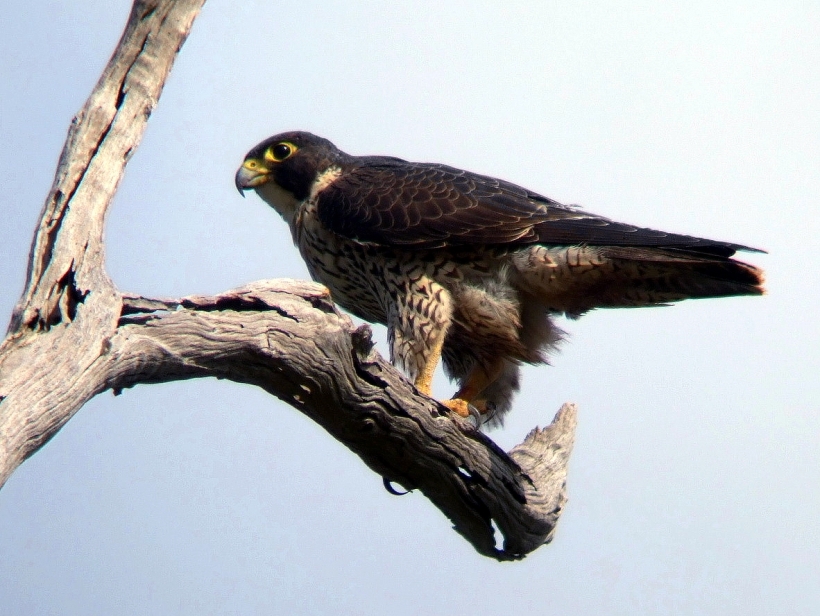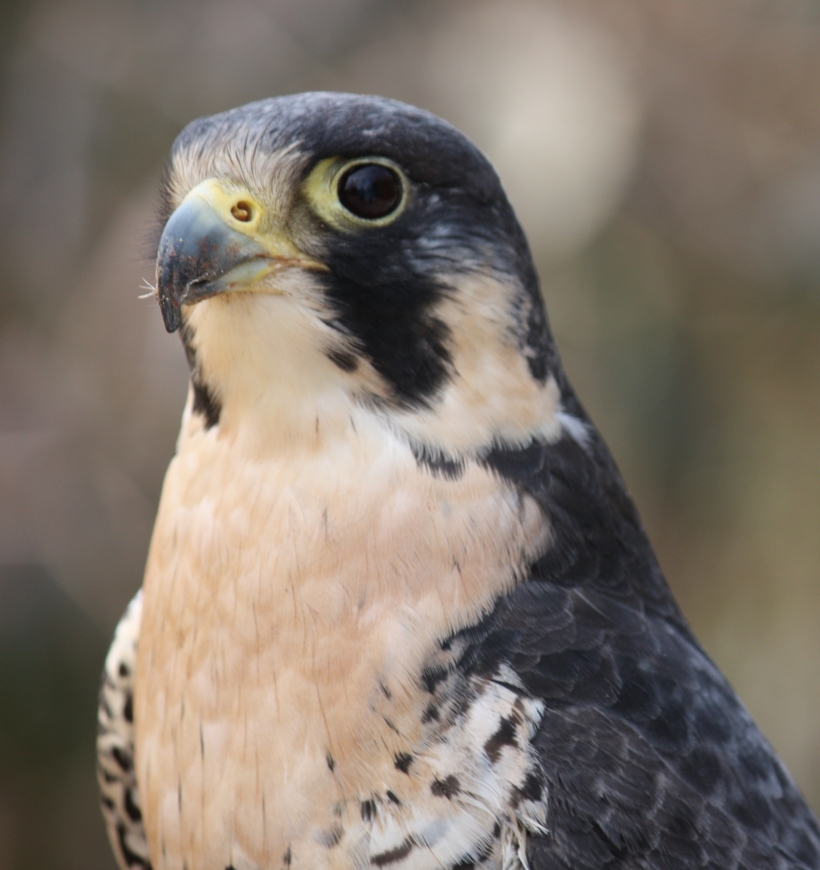I couldn’t bring myself to watch the closing ceremony. The Olympics took over my life so much for 2 weeks that I wasn’t sure what to do with myself. And the constant BBC montages began to tip me over the edge. Roll on the Paralympics so I can spend more time watching these superhuman athletes smash world records, whilst I sit on the sofa taking on my own record – most chocolate digestives eaten in five minutes.
In my last blog I started exploring some of nature’s own record holders, with probably the most famous animal athlete of them all – the cheetah. Their small frame, strong legs, specialised muscles and super bendy spine mean these mammals are built for speed. But their 70mph sprint looks measly compared to the Concorde of the animal kingdom…

The Peregrine Falcon
Generally, birds are built to be flying machines (which I’m sure isn’t news to you!) They have light, hollow bones, powerful chest muscles and that streamlined shape most speed athletes strive for (painful hair removal isn’t necessary for our feathered friends!) But there are many variations across different species and that’s where it gets interesting. Peregrine Falcons are designed to reach dizzying speeds. I’m sure you’ve all seen videos of these bird missiles shooting through the air as they perform their hunting stoop (if not, google it, you won’t be disappointed. Just make sure you don’t blink or you’ll miss it!)
The peregrine falcon normally flies at speeds of around 60mph but when it dives (or stoops) to attack it reaches 200mph! 200MPH?! How on earth doesn’t that bird pass out or, even worse, explode?!
Well thanks to the wonderful world of evolution, peregrine falcons are designed as intrinsically as jets (in fact– we’ve taken a lot of inspiration from the design of the falcon to manufacture planes!) Their slim feathers create the perfect streamlined silhouette when drawn against the body and attached to these are large flight muscles to help propel them through the air. The feathers also play an important part with video evidence showing small feathers popping up during the dive. Scientists believe these help reduce drag by keeping air flowing smoothly over the bird’s body – think about the flaps on the wings of an aeroplane.

Perfecting your appearance to rocket you through the sky is all well and good – but your organs need to be able to keep up. Their circulatory systems are incredibly strong, with large lungs and specialized air sacs to take in as much air as a possible and a strong heart which beats over 600 times per minutes! And their muscles are stuffed full of red muscle fibres so they can take in lots of oxygen, increasing their metabolic activity to give them the flight power they need.
The change in air pressure resulting from a plummet of a 200mph dive is so large that it could and should damage the bird’s lungs. But luckily someone along the evolutionary path has thought of that. Peregrine falcons have small cone-like bones on their nostrils which guides the airflow away, reducing the air pressure and allowing them to breathe more easily in flight. This design is so good that it’s now used in jet engines!

The thought of dropping through the sky this fast makes my eyes water. I’m sure anyone who’s ever skydived will tell you that it baffles your senses! Your eyes are dry but also streaming all at the same time and your cheeks wobble in a way you didn’t even know was possible (cue some great photo opportunities). So I’m really pleased to say these bird-shaped rockets have got that covered to. They have a third eyelid to spread their tears and clear debris as they dive – protecting their eyes as they keep them on the prize!
Their dive or stoop is so fast that it would actually be dangerous to grab their prey (normally other birds) out of the sky. So they’ve come up with a different tactic here too. They ‘punch’ their prey in the back of the head. Which is a much nicer way of describing what actually happens. In fact these birds use their terrifying talon to rip along the back of their targets neck, breaking their spine and causing them to tumble out of the sky. Lovely.
However awful an ending this is for the smaller birds that fall prey to these avian missiles, there’s no denying their strategy is a successful one – they’re found in every continent except Antarctica and around a fifth of the world’s bird species are on their shopping list. Impressive. But it’s not all about speed. There are other finely tuned athletes in the animal kingdom that have perfected other sporty skills. But more about that next time…